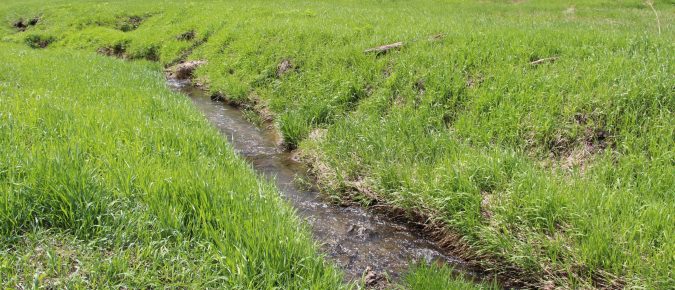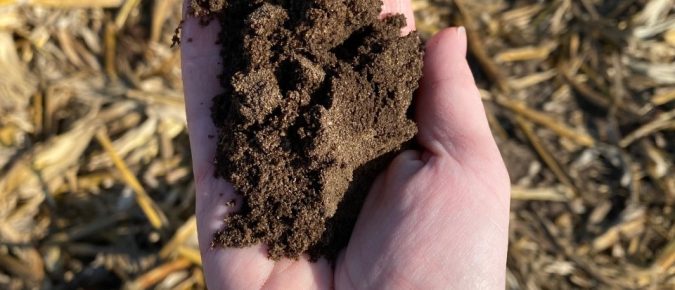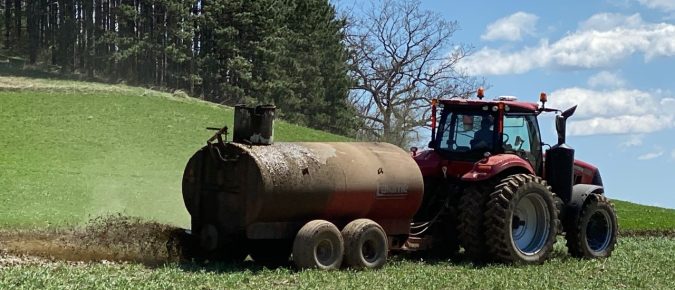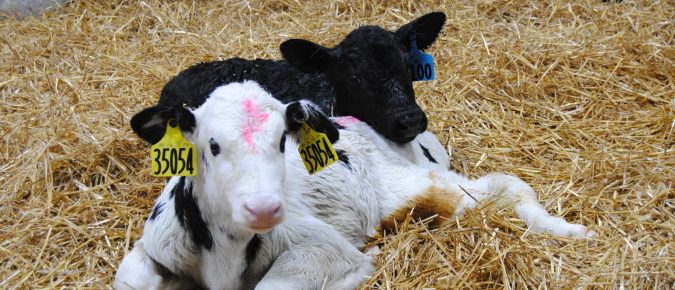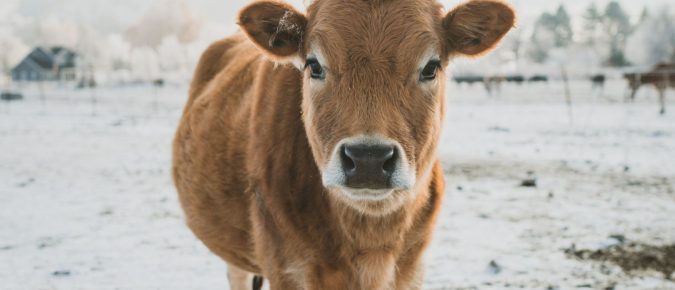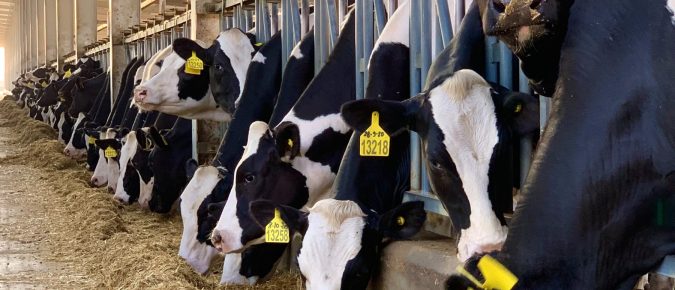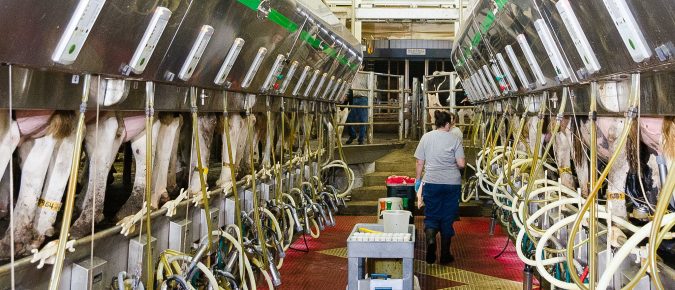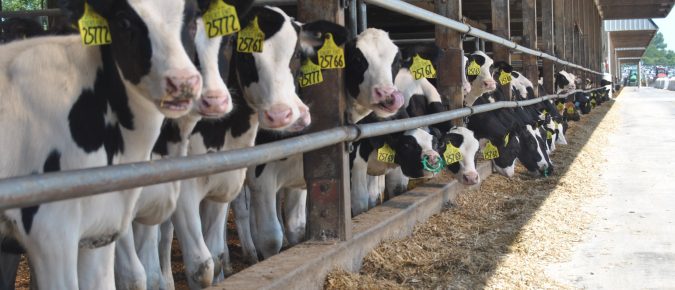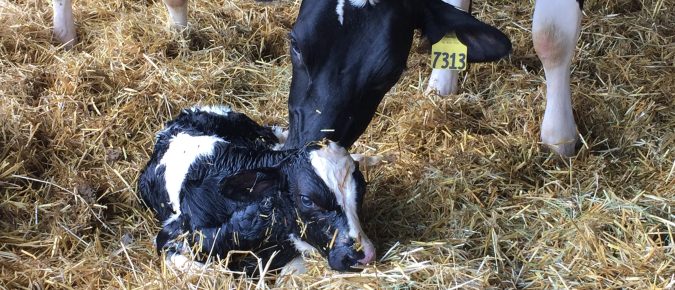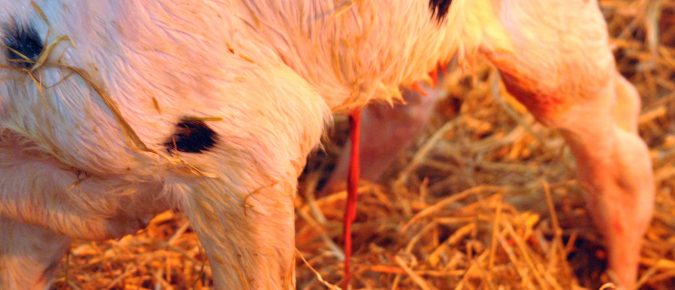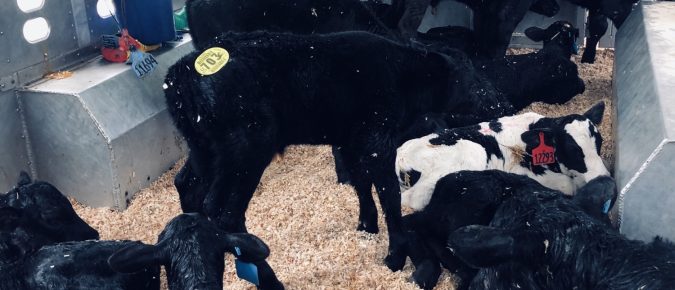Manure can be used in a sustainable manner by returning nutrients to the soil to grow crops that feed animals. However, on many livestock farms, manure poses operational, economic, and environmental constraints. Managing manure every day requires labor and money. Losses of manure constituents from the system result in negative environmental impacts such as degrading water and air quality.
Phosphorus is an important mineral added to animals’ diets and is critical to their development and growth. However, much of the phosphorus is excreted and ends up in manure. For many crops, if manure is applied at the rate needed for nitrogen, too much phosphorus is applied, which may lead to a buildup of excess phosphorus in soils. Phosphorus buildup can lead to increased phosphorus loss and the resulting environmental consequences. If manure is applied to meet crop phosphorus needs, supplemental nitrogen application is required.
Livestock produce high protein sources of food, but they also produce manure. When used effectively, manure can provide a sustainable source of fertilizers, energy, and other valuable products. However, when not managed effectively, manure components including nutrients, organic matter, and pathogens can be lost to the environment causing negative environmental impacts.
Winter weather brings new challenges for completing chores on the farm. Calf care is no exception. Calves perform best when we acknowledge their needs change in colder weather and adjust our management accordingly.
Be aware of the approaching winter weather which may bring added stress to cattle. Cattle can be tolerant of cold conditions, although extreme cold temperatures combined with wind, rain, and snow may bring added challenges to the health and well-being of cattle not only on the farmstead but during transport as well.
Reproductive data is particularly difficult to measure which makes it a challenge to measure and monitor, even on large dairy farms. Measuring reproductive performance is about measuring probabilities—the likelihood an event will occur.
Prototheca bovis has been cultured in herds and is emerging as a threat to producers statewide. Prototheca has been linked to mastitis since 1952, however, within the last five years, the prevalence has significantly increased. Similar to Staph aureus and mycoplasma, Prototheca is hard to detect, has no known cure, and is contagious by intermittently shedding from cow to cow.
Animal care and welfare starts on day one with the newborn calf. Healthy calves are the cornerstone of every dairy operation, not only providing the future genetics for the herd but healthy calves are also important to the vitality of the dairy farm.
Heifers represent the future of the dairy operation, bringing genetic progress to the milking herd. Raising heifers is costly and improving efficiencies in raising them can have a financial impact on the overall profitability of the dairy business.
Superior calf performance begins during the birthing process in the maternity pen. Based on the 2017 USDA NAHMS Survey, five to seven percent of all newborn calves are stillborn or die within the first 48 hours. To improve calf survival after birth, we must follow practical, consistent calving protocols and provide a clean, dry calving environment.
One of the simplest best management practices we can do for the newborn calf is navel care. Previous University of Minnesota research showed in a controlled study that umbilical cord care significantly reduced the risk of developing umbilical cord infections.
As operations grow, or focus more on the milking herd, it has become a necessary component in moving newborn calves from the farm to a separate calf raising facility, some being out of state. Handling and transporting these calves can be stressful. However, there is limited research on the impact of long-distance travel on a newborn calf’s welfare.

